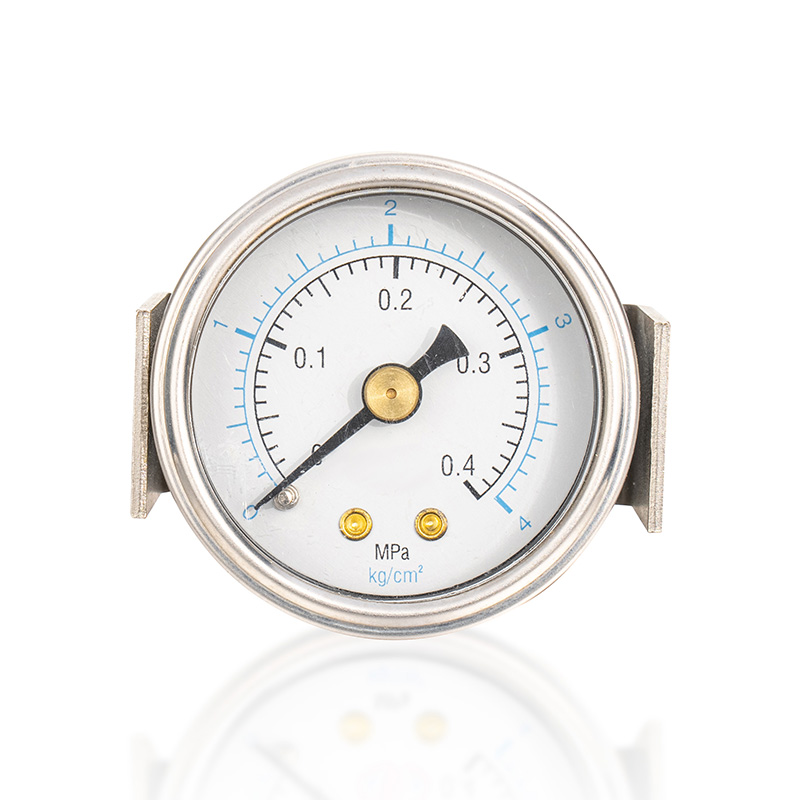+86-15105800222
+86-15105800333
Need help? Call us: +86-15105800333 / Whatsapp:+86-15105800333 / Email:[email protected]
- Home
- Product
- About
- Strength
- News
- Contact
The influence of coffee machine sealing performance on the stability of pressure gauge readings
As a precise thermal and hydraulic control system, the stable operation of the coffee machine is inseparable from the efficient coordination of multiple subsystems. Among all key components, the stability of sealing performance directly affects the overall pressure performance of the machine, especially in the high-pressure extraction process of the espresso machine. As a key indicator device reflecting the changes in system pressure, the accuracy and stability of the pressure gauge readings are deeply affected by the sealing performance of the system. Sealing problems not only interfere with the pressure transmission path, but also may cause equipment misjudgment, inconsistent flavors and even safety hazards. The following is an in-depth discussion of the professional influence of sealing performance on the pressure gauge of the coffee machine from the perspectives of structure, material, wear, thermal expansion and contraction, and maintenance.
The basic role of sealing structure in pressure stability
When the coffee machine is running, the pump body usually pushes water through the powder cake at a high pressure of 8-10 bar to achieve extraction. If there is a tiny leak in any joint, valve, pipeline or connection between the boiler and the water outlet in the system, it will cause pressure release. Since the pressure gauge is usually installed in the main water circuit or boiler circuit, the pressure value it receives must be based on a complete closed system. When the sealing is insufficient, even if the actual output pressure of the pump is stable, the reading reflected by the pressure gauge will continue to shake or periodically drop due to the internal pressure relief of the system. This phenomenon often occurs in the initial stage of machine pressurization or continuous working state, which is manifested by the inability of the pressure gauge pointer to maintain the target pressure range, and even frequently falls back to near zero.
The impact of sealing material aging on reading accuracy
The commonly used sealing materials in coffee machines include silicone rings, nitrile rubber rings (NBR), polytetrafluoroethylene (PTFE) gaskets, etc. As the equipment is used for a longer time, these materials gradually lose their elasticity under high temperature and high pressure environments, and cracks, indentations or fatigue loss may appear on the surface. In heat exchange boilers, three-way solenoid valves, pump body interfaces and other parts, once the sealing material ages, even if there is no obvious leakage, the micro-seepage phenomenon is still enough to interfere with the stability of system pressure. This "hidden pressure relief" phenomenon is usually difficult to identify by naked eye observation, but the pressure gauge can directly reflect the subtle fluctuations of the hydraulic system, which is manifested by the pointer swinging slowly, not returning to zero or always maintaining a low position that is not the set value.
Micro-leakage caused by wear and installation process defects
The sealing performance is not only related to the material itself, but also closely related to the mechanical fit accuracy between components. For example, if the threaded connection between stainless steel pipe fittings and copper joints does not reach industrial-grade tightness, even if sealing tape or sealing paste is added, the gap may expand due to vibration and thermal cycling during high-frequency use, thereby forming an intermittent pressure relief channel. If the tightening torque of the fixing screws between the pump body and the shell is insufficient, it will also cause local stress concentration, causing uneven compression sealing, thereby affecting pressure stability. These installation process problems often do not cause large-scale water leakage, but are enough to cause intermittent jumps in the pressure gauge reading.

Seal failure mechanism caused by temperature changes
The coffee machine has a repeated heating and cooling cycle during operation, especially in a dual boiler system or heat exchanger model. The difference in thermal expansion coefficients of different materials makes it easier to produce expansion dislocation at the metal-nonmetal interface. For example, stainless steel pipes expand rapidly when heated, while the rubber seals at the joints may soften or shrink when heated, causing short-term failure. When the machine cools down, the sealing problem may disappear temporarily, forming an intermittent sealing problem. This "periodic pressure relief" phenomenon caused by thermal expansion and contraction can easily interfere with the real-time response of the pressure gauge, making it difficult for operators to judge the true status of the equipment.
The impact of sealing performance on the pressure waveform response curve
In high-end electronic pressure sensing systems, pressure is not only output in numerical form, but also a real-time pressure waveform curve can be drawn. If the sealing performance is good, the pressure curve should show a smooth rise to a stable range and then maintain a smooth platform. When sealing defects exist, the pressure curve will show jagged fluctuations, periodic drops, or fail to reach the ideal extraction pressure. This fluctuation not only affects the flow rate and concentration of the final coffee liquid, but may also mislead the back-end PID control logic, causing the heater to start and stop incorrectly, thereby further affecting the temperature and pressure bistable state.
The necessity of regular maintenance and sealing detection
To ensure that the pressure gauge readings are always accurate, regular replacement and tightening inspection of coffee machine seals are part of the standard maintenance process. It is recommended that commercial equipment replace the seals of frequently used parts every 6-12 months, especially the pump inlet and outlet, boiler safety valve, condensing valve and steam pipe joints. At the same time, the system should be tested for static pressure retention using a pressure test tool to determine whether there is a slow pressure loss phenomenon. Combined with pressure gauge calibration and water pump performance testing, effective supervision of the overall pressure system can be achieved to ensure long-term stable operation of the equipment.